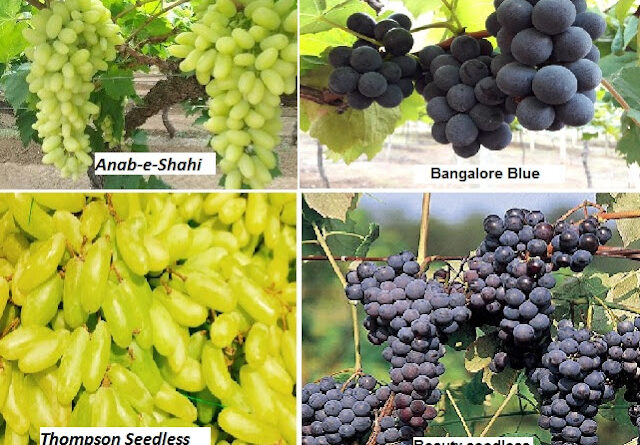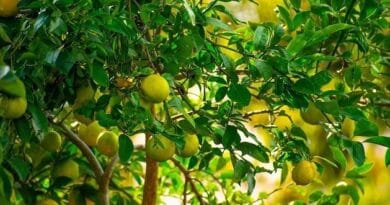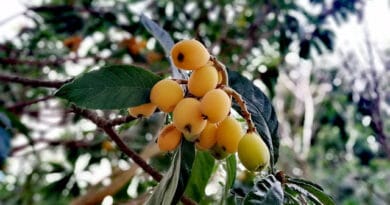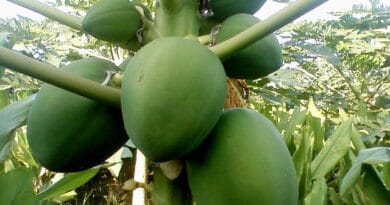Cultivation of Grapes in India; A complete information Guide
Cultivation of Grapes; It is grown worldwide primarily for wine production (82%), raisin production (10%), and the remaining 8% for table use.
Grape (Vitis vinifera L.) is one of the most important subtropical fruits in the world. The maximum production of grapes is in southern India. Karnataka ranks first, followed by Maharashtra, Andhra Pradesh, and Tamil Nadu. In these states, plants do not shed their leaves but continue their growth throughout the year, bearing two crops, resulting in exceptionally high yield but poor fruit quality.
Nutrient value of Grapes;
The nutritional value of 100 g is given below
| Types | Quantity | % Daily Value |
| Calories | 67 K cal | |
| Total Fat | 0.4 g | 0% |
| Saturated Fat | 0.1 g | 0% |
| Cholesterol | 0 mg | |
| Sodium | 2 mg | 0% |
| Total Carbohydrates | 17 g | 5% |
| Dietary Fiber | 0.9 g | 64% |
| Sugars | 16 g | |
| Protein | 0.6 g | 48% |
| Vitamin C. | 6% | |
| Vitamin B6. | 5% | |
| Calcium | 1% | |
| Magnesium | 1% | |
| Iron | 37% | |
| Potassium | 191 mg | 5% |
| The % Daily Value (DV) tells you how much a nutrient in a serving of food contributes to a daily diet. 2000 calories a day is used for general nutrition advice. | ||
Climate and Soil Requirement for Grape Cultivation;
1) It grows well in dry climates, having a frostless winter and long, dry summer
Selection of varieties in Grape Cultivation;
The commercial varieties are mentioned below:
6. Thomson seedless. It is being grown successfully in Maharashtra, Tamil Nadu, and North India. It is also known as Sultanina and Australian seedless. It is suitable for fresh fruit, wine-making, and raisin-making. It fetches a good price in the market. It is highly susceptible to fungal diseases.
11. Vathi. It is a cross between Black Champa and Thomson Seedless. Fruits are of a yellowish-green color, sweet and fragrant. It is suitable for table purposes and raisin making.
Commercial Varieties of Grapes Utilized for Specific Purposes are Given in the Following:
| Category | Varieties |
| Table grapes | Anab-e-Shahi, Bangalore-Blue, Beauty-Seedless, Bhokri(Pachadrakshi), Cheema-Sahebi, Delight, Gulabi(Panneer-Drakshi, Muscat-Hamburg), Himrod, Kali Sahebi, Kandhari, Khalili, Pandari Sahebi, Perlette, Selection 94, Pusa Seedless, and Thompson Seedless. |
| Raisin Grapes | Thompson Seedless, Arkavati |
| Wine Grapes | Bangalore-Blue, Thompson-Seedless, and Arka Kanchan |
Grape Varieties based on color and seeds
Coloured seeded | Bangalore Blue, Gulabi (Muscat) |
Colored seedless | Beauty seedless and Shared Seedless |
White seeded | Anab-e-Shahi, Dilkhush (clone of Anab-e-Shahi) |
White seedless | Perlette, Pusa Seedless, Thompson Seedless, and its clones (Tas-A-Ganesh, Sonaka & Manik Chaman). |
Grapes are usually propagated by cutting in India. In the countries where Phylloxera root louse is a problem, it may be multiplied by grafting on resistant rootstocks.
Planting Method in Grape Cultivation;
Plants raised by cutting are planted during January and February. Planting should be done in pits of 60 cm x 60 cm x 60 cm. Planting distance varies according to the system of training to be followed.
Training and Pruning Methods in Grape Cultivation ;
The following are the important systems of training adopted in our country.
B. Pergola or Bower or Pandal system. It is very suitable for vigorous varieties like Anabe-Shahi and is generally followed in South India. High yields may be obtained by this system. Plants are planted at 4.5 m x 5.5 m. m apart. In this system, wires are stretched crosswise in all directions on the brick or iron Pillars at a height of about 2 meters, giving the appearance of a pandal. The branches are fastened to the horizontal wires of the pergola and allowed to grow on all sides of the roof. Several spurs of up to 5 buds are retained on each arm for flowering and fruiting. It is a very costly system.
seedless in that fruiting is on long canes are trained by this system.
Time and Method of Pruning in Grape Cultivation
Manuring in Grape Cultivation;
In north India, 125-150 gm N, 50-100 g of P, and 250-300 g of K per plant has given good results. In addition, 75 kg F.Y.M./plant is also given. They should be applied in two split doses, part after pruning in February and the remaining half in April.
In A.P. and Tamil Nadu, 1000-1125 kg N, 750-875 kg P, and 750-1000 kg of K per ha have been found beneficial. These doses should be applied divided into two equal parts after every pruning.
Harvesting and yield
Properly cared plants start fruiting after two years of planting in North India. It is better to have the fruiting in the fourth year of planting. Berries start ripening from the end of May in early varieties. However, most of the varieties are harvested by the end of June. Berries are harvested after they have changed color near the tip and have become sweet. Yield varies according to variety and climatic conditions, etc. An average yield of 15-20 tonnes/ha is considered good.




